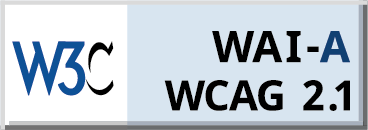In the digital age, traditional assessments are being increasingly replaced by online assessment tools. As educational institutions adapt to remote learning and the integration of technology into teaching, these tools are becoming essential in measuring students' progress and improving learning outcomes.
How Do Online Assessment Tools Enhance Learning Outcomes?
The aim of any educational system is to enhance learning outcomes by helping students grasp concepts effectively and develop the necessary skills to succeed. Online assessment tools play a critical role by aligning assessments with learning objectives and providing insightful data on student performance. By analyzing patterns in assessment results, educators can adapt their teaching methods to better meet the needs of their students.
1. Personalized Learning Experiences
It enables personalized learning experiences for students. By using adaptive testing techniques, these tools can adjust the difficulty level of questions based on student's performance, ensuring that each student is challenged at the right level. This approach helps to keep students engaged and motivated, as they are presented with questions that are neither too easy nor too difficult.
2. Instant Feedback
As soon as a student completes an assessment, they can see their results and identify areas where they need to improve. This immediate feedback allows students to take corrective action quickly, rather than waiting for days or weeks to receive their results.
3. Comprehensive Analytics and Reporting
These tools provide comprehensive analytics and reporting features that allows to track student progress over time, identify trends, and make data-driven decisions. With access to detailed reports, you can pinpoint areas where students are struggling and develop targeted interventions to support their learning.
4. Increased Efficiency and Time Savings
Administering assessments can be a time-consuming and labor-intensive process. Online assessment tools streamline the entire assessment lifecycle, from creation to grading, saving valuable time and resources. With features like automatic grading, question banks, and test templates, you can create and deploy assessments quickly and efficiently.
5. Enhanced Collaboration and Communication
Online assessment tools foster collaboration and communication among students and educators. Many tools offer features like peer review, group projects, and discussion forums, which encourage students to work together and learn from each other. Additionally, these tools provide a platform for educators to communicate with students, provide feedback, and offer support throughout the learning process.
How does Talview Online Exam Platform Enhance Learning Outcomes?
Talview’s Online Exam Platform offers a comprehensive suite of features designed to elevate the online exam experience, enhancing both security and effectiveness.
1. Robust Security for Academic Integrity
It employs multiple layers of security to prevent cheating and unauthorized access. This includes secure browser that restricts access to external resources during the exam, encryption of data both in transit and at rest, and integration of proctoring solutions - live, automated, record-and-review and AI agents.
2. Customizable Assessments for Diverse Needs
It supports a wide range of question types to meet the needs of various assessments. From multiple choice and true/false questions to essays, fill-in-the-blanks, matching, and drag-and-drop questions, educators can design exams that thoroughly assess different levels of knowledge and skills.
3. Accessibility for All Learners
With accessibility being a core principle, Talview ensures that its platform adheres to web accessibility standards such as WCAG (Web Content Accessibility Guidelines). This means that exams created on the platform are accessible even for candidates with disabilities. Features such as screen reader compatibility, adjustable font sizes, and alternative text for images ensure that all students, regardless of their physical abilities, have an equitable and fair testing environment.
4. Flexible Time Management
It allows instructors to set specific time limits for the entire exam or individual questions. This flexibility enables them to structure exams that suit different learning objectives, ensuring that students are challenged appropriately without feeling rushed or pressured.
5. Comprehensive Analytics for Informed Decisions
It allows instructors to track both individual and group performance trends, analyze question difficulty, and identify patterns in student behavior. With this data, educators can make informed decisions about how to adjust teaching strategies, refine exam content, and enhance overall effectiveness.
Conclusion
By leveraging the full potential of online assessment tools and proctoring platforms, educators can help create more personalized, accessible, and effective learning experiences, ultimately enhancing student success. Whether it’s through digital assessments, secure online proctoring, or engaging learning environments, the future of assessments is digital—and it’s transforming education for the better.







Leave a Reply